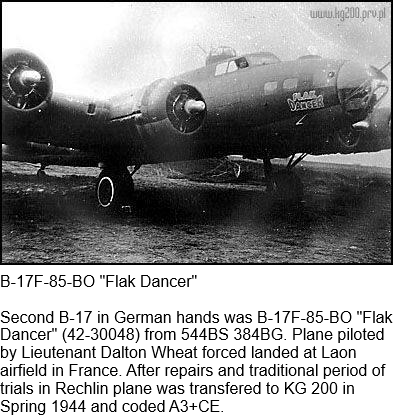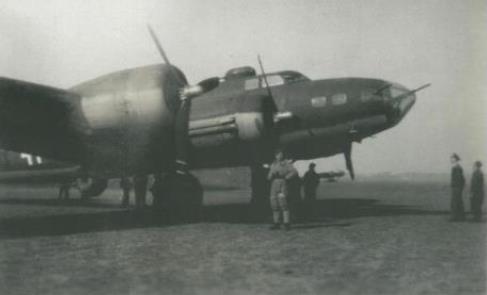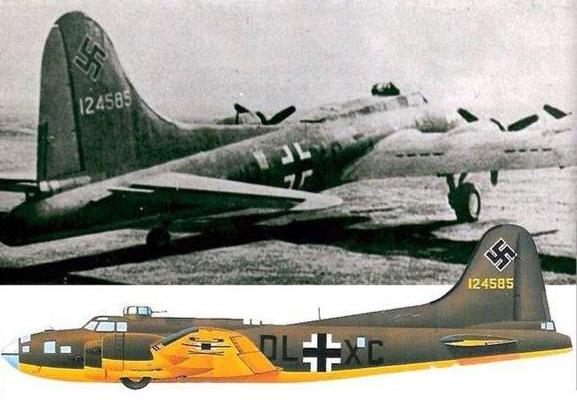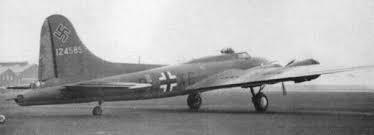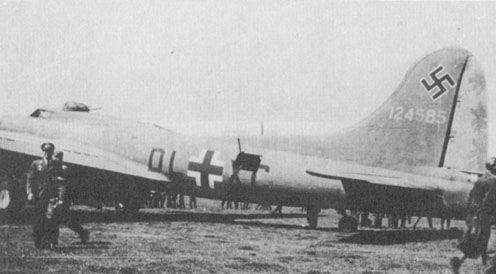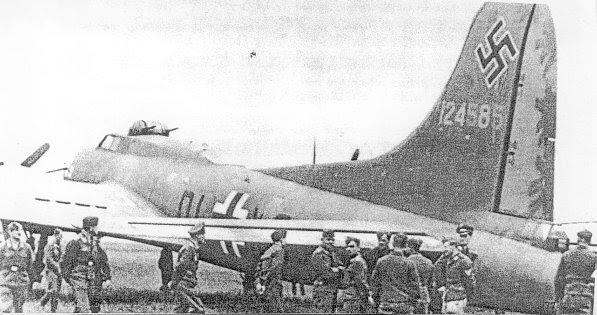| Type | Crew 10: Pilot, co-pilot, navigator, bombardier/nose gunner, flight engineer/top turret gunner, radio operator, waist gunners (2). ball turret gunner, tail gunner. Heavy bomber |
| Engine | 4 Wright R-1820-97 "Cyclone" with 3-bladed Hamilton-Standard constant-speed propeller |
| Dimensions | Length 22,66 m , height 5,82 m, span 31,62 m, wing area 131,92 m2 , airfoil: NACA 0018/ NACA 0010, aspect ratio 7,57 |
| Weights | Empty 16391 kg, loaded 24500 kg, max. take off weight 29700 kg |
| Performance | Max.. speed 462 km/h , cruising speed 293 km/h, range 3219 km, endurance , service ceiling 10850 m , climb 4,6 m/sec. |
| Armament | Guns: 13 12.7 mm M2 Browning machine guns in 9 positions (2 in the Bendix chin turret. 2 on nose cheeks, 2 staggered waist guns. 2 in upper Sperry turret. 2 in Sperry Dali turret in belly. 2 in the tail and one firing upwards from radio compartment behind bomb bay) Bombs: • Short range missions: internal load only (<400 mi): 8.000 lb (3.600 kg) • Long range missions: Internal load only (-800 mi): 4.500 lb (2.000 kg) • Max Internal and External load: 17,600 lb (7,800 kg) |
| Type | Werk.Nr | Registration | History |
| F-27-BO | 41-24585 | A3+AE, DL+XC | KG 200 |
| F-5-VE | 42-5714 | DR+PE | KG 200 |
| SJ+KY, A3+CE | |||
| 42-5714 | DR+PB |
